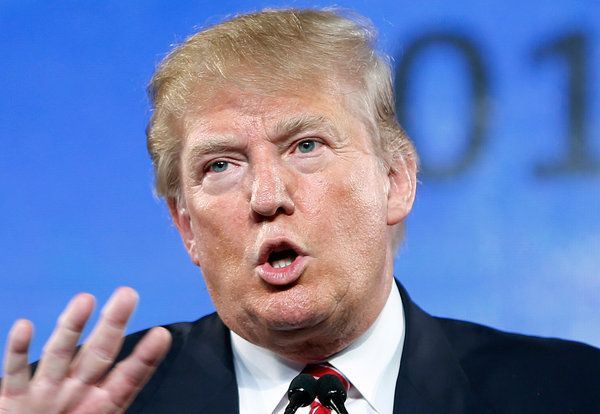
WASHINGTON — Donald Trump is about to order a study on the U.S.’s major trading partners to determine which ones are using abusive trade practices to run export surpluses — and Canada is among the countries to be examined.
The president will sign an executive order Friday demanding a study within 90 days of all the ways other countries allegedly pull a fast one on the United States through anti-competitive trade practices.
It will be a systematic examination of things like non-tariff barriers, lax legal enforcement, currency manipulation and other means that keep out American goods while other countries boost their own exports.
The ultimate goal: quantify exactly how much of the U.S. global trade deficit is due to supposedly unfair practices, and seek remedies for the imbalance.
“There has never been this kind of systematic analysis,” Commerce Secretary Wilbur Ross told reporters at the White House.
“It will be very heavily based on an empirical framework.”
Ross stressed that he wasn’t singling Canada out.
There are about 16 countries on the list, which includes places with the biggest trade surpluses with the U.S. The biggest is no contest: China, with a US$347 trade billion surplus with the U.S. last year. That’s followed by Japan, Germany and Mexico, and a list of U.S. allies like France, Italy, India and Thailand.
Of all the countries, Canada is listed as having the smallest surplus. It was the last of the countries Ross mentioned. U.S. government statistics show Canada even ran a trade deficit of US$11.9 billion with the U.S. in goods and services in 2015, before running a surplus in 2016.
Ross acknowledged an obvious reason for that Canadian surplus: oil. American energy consumption patterns require it, and that results in millions of barrels per day in imports that can’t easily be waved away by executive order.
“Undoubtedly we’ll conclude that with some of the countries no action should be taken,” Ross said.
“A lot of what Canada’s deficit comes from is oil.”
When oil prices rise, Canada habitually runs a trade surplus with the U.S; the opposite happened in 2015 when they dropped. Ross pegged last year’s Canadian trade surplus at $11.9 billion.
If Canadians want clues about what the study might find, those clues already exist.
The U.S. already publishes annual studies chronicling its trading partners’ alleged abuses. Ross, in fact, claimed Thursday that no country trades as freely as the U.S. — including some others that like to brag about how they’re supposedly free traders.
The latest U.S. report on trade barriers complains about Canadian dairy and poultry controls; limits on U.S. wine in grocery stores; aerospace support; telecommunications; the relatively minuscule $20 duty-free limit on goods purchased online; and limits on American companies’ ability to supply some services to some Crown corporations, singling out cloud-computing and Hydro-Quebec.
Ross said: “I don’t know that Canada can object to our doing the study — or anyone else.” He said other countries couldn’t possibly have a problem with the U.S. doing an examination of trade patterns, and bemoan it before the results are even in.
Oil and vehicles account for almost half of U.S. goods imports from Canada.
Softwood lumber represents a smaller share. But it’s a significant source of Canada-U.S. trade disputes, and could be the source of yet another one: Trump is signing a second executive order Friday, and it involves toughening the system for collecting anti-dumping and countervailing duties in trade disputes.
The orders are being issued as the U.S. prepares to open NAFTA negotiations later this year.